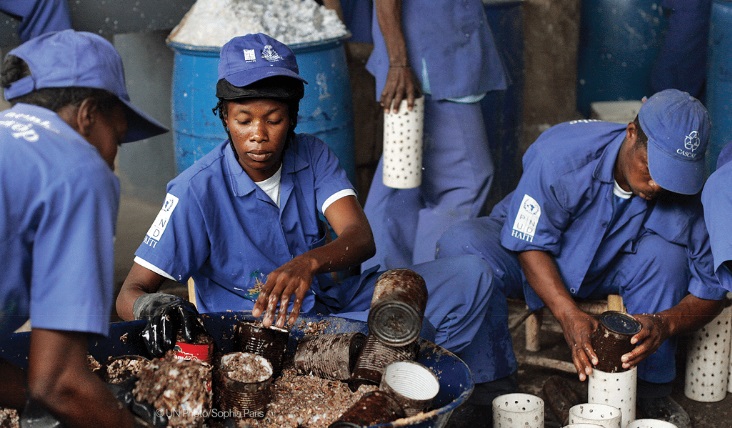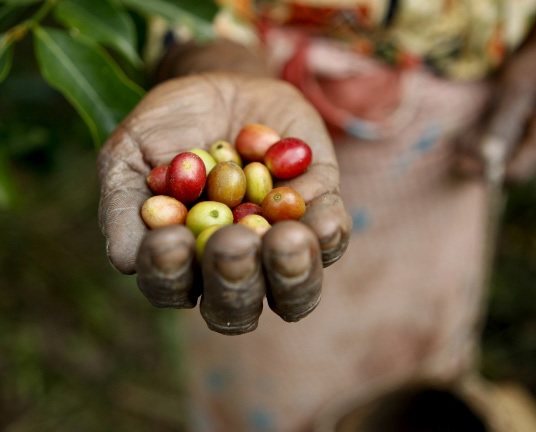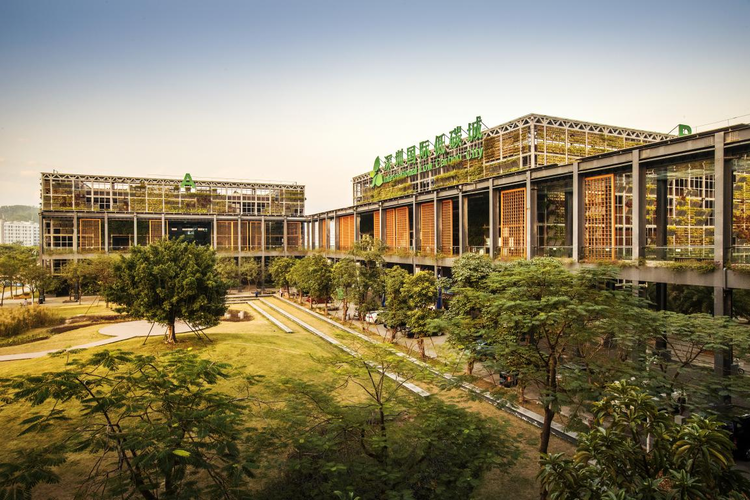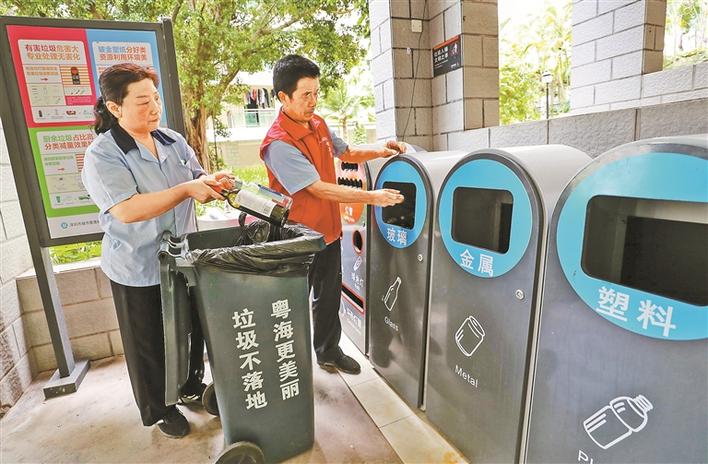

Goal 12: Ensure sustainable consumption and production patterns
Sustainable consumption and production is about promoting resource and energy efficiency, sustainable infrastructure, and providing access to basic services, green and decent jobs and a better quality of life for all. Its implementation helps to achieve overall development plans, reduce future economic, environmental and social costs, strengthen economic competitiveness and reduce poverty.
At the current time, material consumption of natural resources is increasing, particularly within Eastern Asia. Countries are also continuing to address challenges regarding air, water and soil pollution.
Since sustainable consumption and production aims at “doing more and better with less,” net welfare gains from economic activities can increase by reducing resource use, degradation and pollution along the whole life cycle, while increasing quality of life. There also needs to be significant focus on operating on supply chain, involving everyone from producer to final consumer. This includes educating consumers on sustainable consumption and lifestyles, providing them with adequate information through standards and labels and engaging in sustainable public procurement, among others.

Facts and figures
●Should the global population reach 9.6 billion by 2050, the equivalent of almost three planets could be required to provide the natural resources needed to sustain current lifestyles.
●With rises in the use of non-metallic minerals within infrastructure and construction, there has been significant improvement in the material standard of living. The per capita “material footprint” of developing countries increased from 5 metric tons in 2000 to 9 metric tons in 2017.
●93% of the world’s 250 largest companies are now reporting on sustainability.
Water
●Less than 3 per cent of the world’s water is fresh (drinkable), of which 2.5 per cent is frozen in the Antarctica, Arctic and glaciers. Humanity must therefore rely on 0.5 per cent for all of man’s ecosystem’s and fresh water needs.
●Humankind is polluting water in rivers and lakes faster than nature can recycle and purify
●More than 1 billion people still do not have access to fresh water.
●Excessive use of water contributes to the global water stress.
●Water is free from nature but the infrastructure needed to deliver it is expensive.
Energy
●If people worldwide switched to energy efficient lightbulbs, the world would save US$120 billion annually.
●Despite technological advances that have promoted energy efficiency gains, energy use in OECD countries will continue to grow another 35 per cent by 2020. Commercial and residential energy use is the second most rapidly growing area of global energy use after transport.
●In 2002 the motor vehicle stock in OECD countries was 550 million vehicles (75 per cent of which were personal cars). A 32 per cent increase in vehicle ownership is expected by 2020. At the same time, motor vehicle kilometers are projected to increase by 40 per cent and global air travel is projected to triple in the same period.
●Households consume 29 per cent of global energy and consequently contribute to 21 per cent of resultant CO2 emissions.
●The share of renewable energy in final energy consumption has reached 17.5% in 2015.
Food
●While substantial environmental impacts from food occur in the production phase (agriculture, food processing), households influence these impacts through their dietary choices and habits. This consequently affects the environment through food-related energy consumption and waste generation.
●Each year, an estimated 1/3 of all food produced – equivalent to 1.3 billion tons worth around $1 trillion – ends up rotting in the bins of consumers and retailers, or spoiling due to poor transportation and harvesting practices
●2 billion people globally are overweight or obese.
●Land degradation, declining soil fertility, unsustainable water use, overfishing and marine environment degradation are all lessening the ability of the natural resource base to supply food.
●The food sector accounts for around 30 per cent of the world’s total energy consumption and accounts for around 22 per cent of total Greenhouse Gas emissions.

Goal 12 targets
●12.1 Implement the 10-year framework of programmes on sustainable consumption and production, all countries taking action, with developed countries taking the lead, taking into account the development and capabilities of developing countries
●12.2 By 2030, achieve the sustainable management and efficient use of natural resources
●12.3 By 2030, halve per capita global food waste at the retail and consumer levels and reduce food losses along production and supply chains, including post-harvest losses
●12.4 By 2020, achieve the environmentally sound management of chemicals and all wastes throughout their life cycle, in accordance with agreed international frameworks, and significantly reduce their release to air, water and soil in order to minimize their adverse impacts on human health and the environment
●12.5 By 2030, substantially reduce waste generation through prevention, reduction, recycling and reuse
●12.6 Encourage companies, especially large and transnational companies, to adopt sustainable practices and to integrate sustainability information into their reporting cycle
●12.7 Promote public procurement practices that are sustainable, in accordance with national policies and priorities
●12.8 By 2030, ensure that people everywhere have the relevant information and awareness for sustainable development and lifestyles in harmony with nature
●12.A Support developing countries to strengthen their scientific and technological capacity to move towards more sustainable patterns of consumption and production
●12.B Develop and implement tools to monitor sustainable development impacts for sustainable tourism that creates jobs and promotes local culture and products
●12.C Rationalize inefficient fossil-fuel subsidies that encourage wasteful consumption by removing market distortions, in accordance with national circumstances, including by restructuring taxation and phasing out those harmful subsidies, where they exist, to reflect their environmental impacts, taking fully into account the specific needs and conditions of developing countries and minimizing the possible adverse impacts on their development in a manner that protects the poor and the affected communities
RESPONSIBLE CONSUMPTION & PRODUCTION: WHY IT MATTERS
If the global population reaches 9.6 billion by 2050, the equivalent of almost three planets will be required to sustain current lifestyles

(UN Photo / Martine Perret)
What is the goal here?
To ensure sustainable consumption and production patterns
Why?
Economic and social progress over the last century has been accompanied by environmental degradation that is endangering the very systems on which our future development and very survival depend.
If we don’t act to change our consumption and production patterns, we will cause irreversible damage to our environment.
What are some of the current consumption and production patterns that need to change?
There are many aspects of consumption that with simple changes can have a big impact on society as a whole. For example, about one third of the food produced for human consumption each year is lost or wasted. When it comes to consumers, households consume 29 per cent of global energy and contribute to 21 per cent of resultant CO2 emissions.
Water pollution is also a pressing issue that needs a sustainable solution. We are polluting water faster than nature can recycle and purify water in rivers and lakes. Urgent action is needed to ensure that current material needs do not lead to
over-extraction of resources and further degradation of the environment.
How can I help as a business?
It’s in businesses’ interest to find new solutions that enable sustainable consumption and production patterns. A better understanding of environmental and social impacts of products and services is needed, both of product life cycles and how these are affected by use within lifestyles.
Identifying “hot spots” within the value chain where interventions have the greatest potential to improve the environmental and social impact of the system as a whole is a crucial first step.
Businesses can also use their innovative power to design solutions that can both enable and inspire individuals to lead more sustainable lifestyles, reducing impacts and improving well-being.
How can I help as a consumer?
There are two main ways to help: 1. Reducing your waste and 2. Being thoughtful about what you buy and choosing a sustainable option whenever possible. Reducing our waste can be done in many ways, from ensuring you don’t throw away food to reducing your consumption of plastic—one of the main pollutants of the ocean. Carrying a reusable bag, refusing to use plastic straws, and recycling plastic bottles are good ways to do your part every day.
Making informed purchases about what we’re buying also helps. For example, the textile industry today is the second largest polluter of clean water after agriculture, and many fashion companies exploit textile workers in the developing world. If you can buy from sustainable and local sources you can make a difference as well as exercising pressure on businesses to adopt sustainable practices.
Source: un.org

The International Low Carbon City in Shenzhen is the flagship project of Sino-European sustainable urbanization cooperation, focusing on the development of low-carbon strategic emerging industries such as low-carbon service, intelligent green IT, and energy conservation and environmental protection. It aims to become a national demonstration zone for low-carbon development. (Source: lg.gov.cn)

Shenzhen has established a city-wide system to classify, collect and process nine types of garbage. About 2,700 tons of garbage is classified and recycled each day, which is more than 25 percent of the average daily collection and transportation volume. (Photo by Geng Yichao. Source: Shenzhen Special Zone Daily)
●Background
Sustainable Development Goals (SDGs)
On January 1, 2016, the 17 Sustainable Development Goals (SDGs), including 169 targets, of the 2030 Agenda for Sustainable Development — adopted by world leaders in September 2015 at an historic UN Summit — officially came into force. Countries will mobilize efforts to end all forms of poverty, fight inequalities and tackle climate change, while ensuring that no one is left behind.
Copyright © 2005-2021 IMCC. All Rights Reserved.粤ICP备15048427号 ruizim.net


